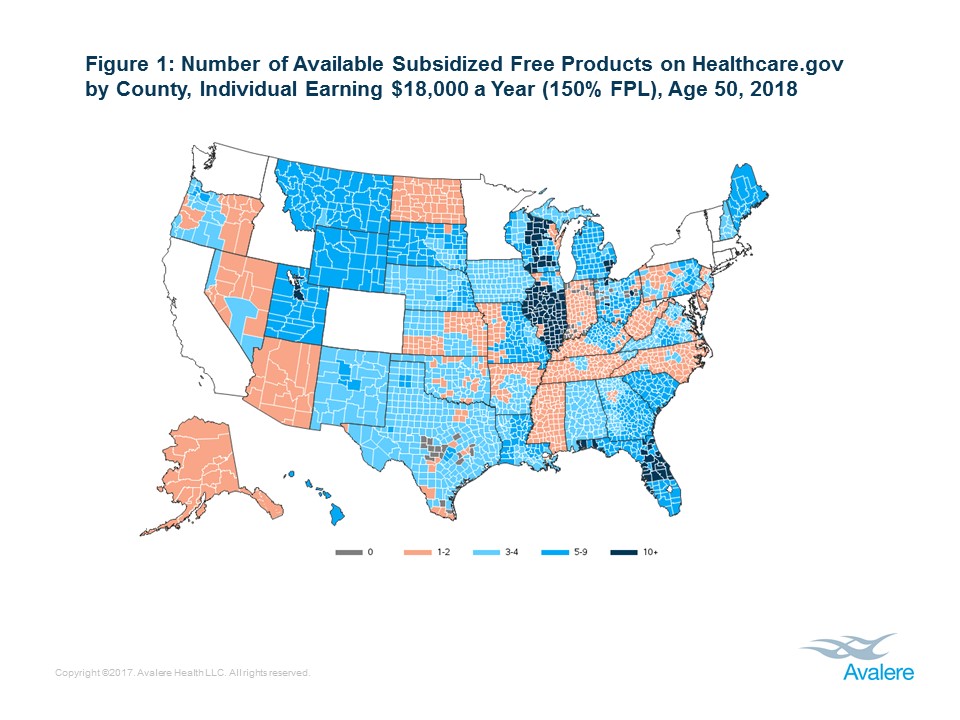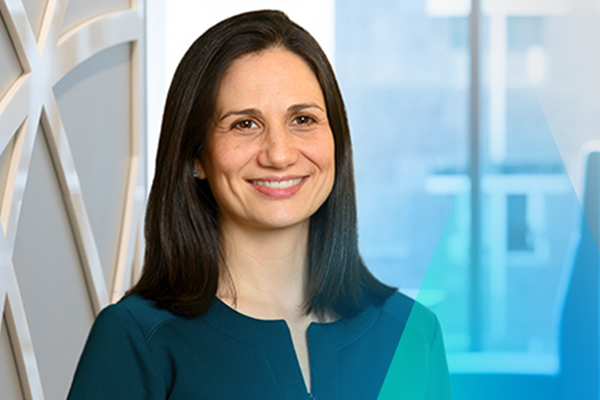Most Counties Will Have Free 2018 Exchange Plans for Low-Income Enrollees
Summary
New analysis from Avalere finds that nearly 98% of counties with exchanges operated by HealthCare.gov will have free bronze plan options for low-income consumers aged 50 earning 150% of poverty or less ($18,090 for an individual or $36,900 for a family of four).“This year, more than ever, it is important for consumers to shop around and compare their options across metal levels,” said Chris Sloan, senior manager at Avalere. “The dramatically higher subsidies mean consumers could be getting much better deals for bronze and gold plans for 2018.”
In 2018, these highly-subsidized consumers will also have access to free silver plan options in 18% of counties. Further, 10% of counties will have free gold plan options available to individuals making $18,090, or 150% of poverty, per year. While availability of free subsidized options decreases for individuals with higher incomes, 2018 will have a high number of free subsidized options.
Avalere experts link the increased availability of free plan options to the Administration’s decision to end cost-sharing reduction (CSR) payments to insurers. This decision has led to substantially higher premium subsidies in 2018, as insurers increase premium levels to make up for the lack of CSR payments.
“The curious effect of the Administration’s elimination of the cost-sharing reduction payments is that many subsidized individuals may find that they pay less for premiums in 2018,” said Caroline Pearson, senior vice president at Avalere.
Because subsidies are tied to premiums of silver plans, consumers may be able to greatly reduce or eliminate their monthly premium by applying the subsidy to bronze plans, which typically have lower premiums than silver or gold plans. Avalere analysis found that in 2018 there over 10,700 instances of free plans offered in counties in Healthcare.gov states for 2018 for low-income consumers earning 150% of poverty or less. Importantly for consumers, however, bronze plans also have higher out-of-pocket costs like deductibles and coinsurance.
“While some consumers may be able to pay less in monthly premium by choosing a bronze plan, they may also have to pay more when they visit a doctor or hospital,” said Elizabeth Carpenter, senior vice president at Avalere. “Consumers should look not just at premiums during this year’s open enrollment, but also the benefits offered by plans at different metal levels.”
The growth of silver plan premiums will lead to subsidies covering a much higher percentage of the premiums for bronze, gold, and platinum plans.
With the recent decision by the Administration to end cost-sharing reduction (CSR) payments to insurers, silver plan premiums for 2018 will see an average increase of 34%. This is substantially higher than the average increases for bronze, gold, and platinum plans, at 18%, 16%, and 24%, respectively. As premium subsidies are bench-marked to the second lowest silver plan in each region, 2018 subsidies are expected to rise dramatically and cover a higher percentage of the costs for bronze, gold, and platinum plans. Importantly, the age of the consumer influences the number of free plans available, with older consumers seeing higher numbers of free plans.
Additionally, the growth of silver plan premiums means more generous gold plans may be available for only $10 more per month.
As silver plan premiums have grown faster than gold plan premiums, more generous gold plans are comparably priced to silver plans in many counties. In 28% of counties in HealthCare.gov states, gold plans are available for as little as $10 more in monthly premium than the second-lowest silver plans. For individuals earning more than 200% FPL, this creates the opportunity to enroll in a more generous plan, with lower average deductibles and cost sharing, at little to no additional cost. Notably, this does not benefit individuals earning less than 200% FPL, as they are eligible for enhanced generosity silver plans that are more generous than gold plans.
Methodology
To conduct the analysis, Avalere utilized the recently released 2018 Individual Market HHS Landscape Files of 2018 exchange plan premiums in Healthcare.gov states. Avalere then calculated the expected advance premium tax credits (APTCs) in each of the 2,722 counties, by income, for a 50-year-old non-smoker, using the second-lowest silver plan in each region. That subsidy amount was then applied to every bronze, silver, gold, and platinum plan in counties served by Healthcare.gov to determine the number of “free” plans available to subsidized consumers of different income levels. Avalere used the most up to date IRS determinations of subsidy eligibility and the 2017 Federal Poverty Level Guidelines for all states. Additionally, Avalere used the Alaska-specific and Hawaii-specific federal poverty guidelines for the analysis of Alaska’s and Hawaii’s health plans.
Webinar | Election 2024: What's at Stake for Healthcare?
On August 14 at 1:30 PM ET, Avalere experts and guests will discuss the 2024 elections, exploring the candidates’ health policy approaches and implications for stakeholders.






